Young poultry farmer’s experience with dwarf parent stock
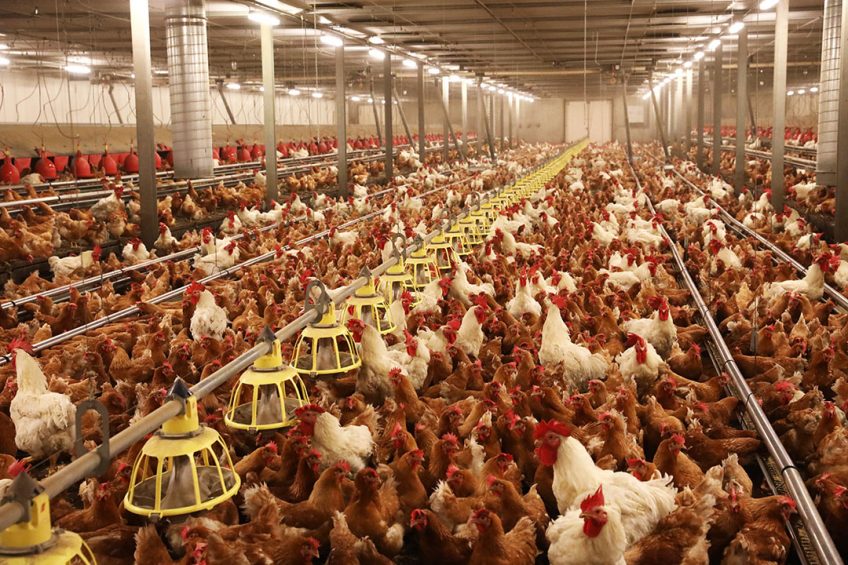
Over 30 Dutch poultry farms work with Hubbard JA57 and JA87 parent stock. Melvin Hazeleger (22) has considerable experience with these dwarf females. He noticed that the laying nest occupancy is a focus point.
Name: Melvin Hazeleger (22)
Residence: Kootwijkerbroek (the Netherlands)
Enterprise: 3rd year HAS student Melvin Hazeleger manages broiler parent stock farm Puurveen Kip B.V. The farm has 3 poultry houses with 28,500 JA57 dwarf hens in total, excluding males. The parent hens’ offspring are slow-growing broilers. Hazeleger works with one employee, Martin Bloemendal.
Melvin Hazeleger points at the brown JA57 parent hens and the white M22 males in the poultry house. “Isn’t it a beautiful sight?” The young farm manager runs broiler parent stock company Puurveen Kip BV in the Dutch village of Kootwijkerbroek and is passionate about his job. The adult males make quite some noise. Photographer Henk Riswick does not need to wait long before he sees them mating with several hens. “That happens all the time in the afternoon,” Hazeleger points out. He has managed this location for over 2 years now. He also worked with dwarf parent stock in the two years before that.
What works on one farm may not always be applicable to your own.”
Hazeleger grew up on a farm. He was born and raised in the Gelderse Vallei, a poultry-dense region in the centre of the Netherlands. There he developed an affinity for the poultry sector at a young age. In his teens he took a job at Morren Breeders. At the moment he combines his studies at Dronten agricultural university with managing the poultry farm. This works out fine for him in terms of managing his time, given that the farm’s only other employee, Martin Bloemendal, takes a lot of the work off his hands. “However, it will be more difficult during graduation,” says Hazeleger. The young poultry farmer is brimming with ambition. He would like to run his own breeding farm someday. However, that is not on the agenda yet. He first needs to get more experience of this craft, he reasons.
“For breeders, stockmanship is a pre-requisite. Managing a breeding flock is a craft you learn by experience. Male management especially requires a lot of attention to detail. Males need to grow but they cannot get too heavy and need to remain vital. I did not grow up in the trade but I am eager to learn. I ask fellow breeder managers and consultants to share their experience and try to gain more insight. In the end, I do make my own decisions. What works on one farm may not always be applicable to your own.”

Many floor eggs
The dwarf parent hens in the poultry house are 35 weeks old. The birds arrive at the age of 19 weeks and leave when they are 65 weeks old. Hazeleger is currently managing his second flock as farm manager at this location. He was satisfied with the last flock, when he began with 30,500 parent hens in 3 poultry houses. The number of breeding eggs per housed hen was 217, which led to 192.4 chicks. The hatching rate was 88.66% while the loss was 4.5%. “The first flock did better than expected,” says Hazeleger. But he sees room for improvement.
Laying nest occupancy is an important factor. Compared to regular parent stock, dwarf hens actually require more nests.”
In the farm’s largest poultry house which houses 18,500 hens, the number of floor eggs requires more labour. “The number of floor eggs during the last flock was 8%,” Hazeleger reports. Together with Bloemendal he spends quite a few hours picking up the eggs. “We work hard to remove the floor eggs as quickly as possible.” The occupancy of the laying nests in his poultry house is suboptimal, Hazeleger concludes. Given the number of nests, there are too many hens. With this second flock he decided to place 2,000 fewer hens. This means that the stocking density per square metre was reduced from 7.7 to 6.8 females. “Laying nest occupancy is an important factor. Compared to regular parent stock, dwarf hens actually require more nests,” Hazeleger explains. He notices that this measure helped against floored eggs. “The rate has now reduced to 4 instead of 8%.”

Extra heating costs
The reduced stocking density may have a positive effect on the number of floor eggs, but it also leads to a lower temperature in the poultry house. The dwarf females reach an average weight of 2.2 kg, which is about half the weight of normal breeders. “Dwarf hens produce much less warmth which is noticeable with the reduced density,” Hazeleger explains. He cannot do without heaters in the 2 older poultry houses at the farm. “Extra heating is unusual in the breeding sector but it is often necessary with dwarf hens in older houses.” Extra heating is not necessary in the large and modern poultry house which has ceiling ventilation. “That poultry house is well insulated. That cuts the cost by half.”
The height of the ledge from the ground to the slats is an important focus point with dwarf parent females, Hazeleger notes. Before the start of the first flock, he lowered the ledge from 55 to 35 centimetres. During the flock he can easily raise the ledge again by 10 centimetres. This is necessary to remove all the manure underneath the slats. “We have no pits underneath the slats. For the older hens 45 centimetres poses no problem.”

Feed and light
The lights at the Puurveen Kip company are switched on at 05:00 hours and remain on for 14 hours. “During the first 2 weeks we are still somewhat careful with light and feed,” Hazeleger explains. “We don’t want the hens to start producing too early, given the weight of the eggs.” Hazeleger feeds the dwarf females as much as they need during the course of the flock, unlike regular parent stock. He works with chain feeding in the 2 older poultry houses. The dwarf hens there are fed 4 to 5 times a day. “We use the Bridomat feed system in the largest poultry house where the birds are fed 7 to 9 times a day.”
Hazeleger has quite a few males. He normally starts with 10%, some of them are put in the quarantine house immediately to spike the flock later. The quarantine house has room for 300 males. During the first flock Hazeleger did not need to add many males. It has been a different story altogether with the second flock. “The males’ leg quality is not great. I see torn heel tendons and I had to add several extra males to the flock. So it’s never a dull moment managing a breeding flock, which is what makes it such an interesting job to me.”
 Beheer
Beheer

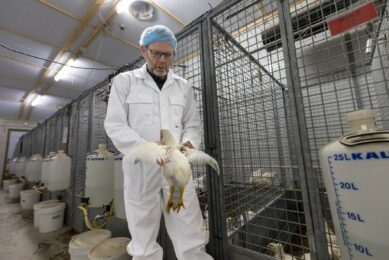
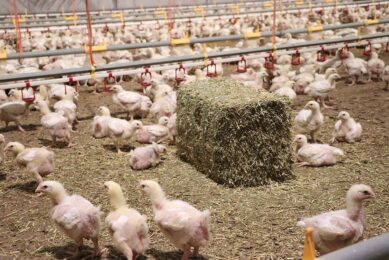
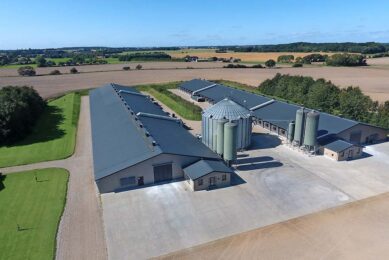
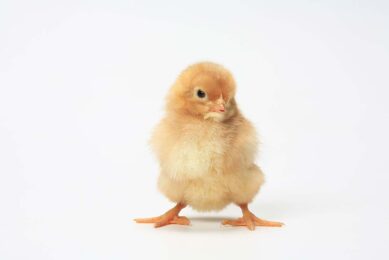



 WP Admin
WP Admin  Bewerk bericht
Bewerk bericht